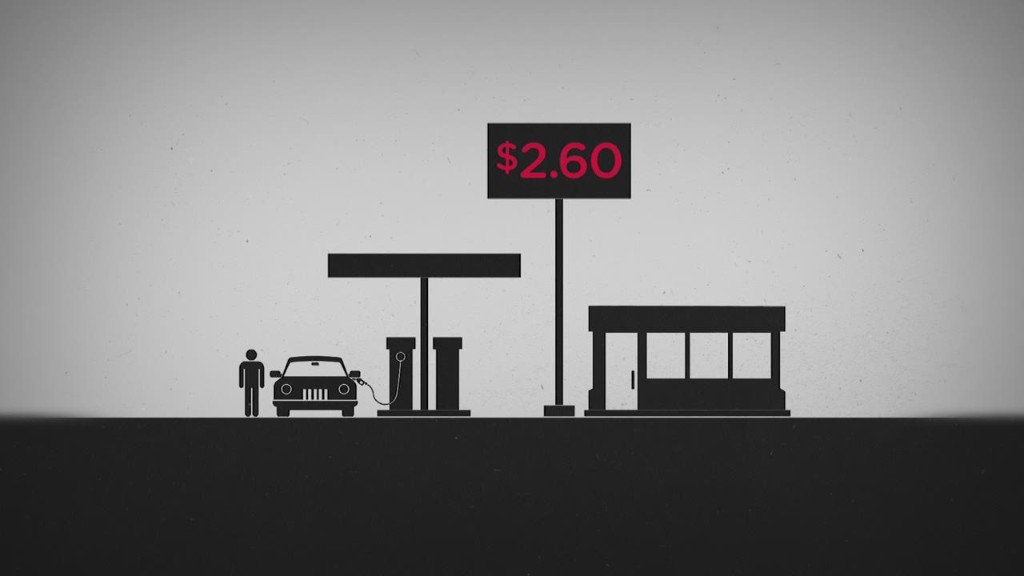
The dash to drill oil in the United States is tripping up.
When oil prices were flying high, producers raced to extract as much oil as possible out of the ground. The flurry of activity fueled the U.S. energy revolution and created tons of new jobs. It also helped spark a massive oil supply glut.
With oil supplies overflowing and demand sluggish, prices have crashed. Crude plunged below $44 a barrel on Thursday and touched levels unseen since March 2009 in the midst of the Great Recession. To put that in context, oil averaged about $93 last year.
Someone has to cut back on production, but there's a global debate about who will blink first. OPEC, led by Saudi Arabia, has made it clear it won't scale back.
Related: What now for oil after Saudi king's death
America's move: There are early signs that U.S. drilling activity is starting to cool down.
The number of U.S. oil rigs actively pumping oil has decreased for seven straight weeks, according to Baker Hughes. The rig count fell to 1,317 as of January 23, down 18% from the record highs of early October back when oil was still at $86 a barrel.
"Whenever prices crash -- and this is a once-in-a-generation crash -- you'll see the rig counts drop," said Tom Kloza, chief oil analyst at the Oil Price Information Service.
To be clear, U.S. oil production is still expected to rise this year, just at a slower pace than previously imagined.
That's because it takes a while for the drop in rig counts to eat into production.
"Wells that were already drilled but not yet completed will represent sources of new supply that will hit the market," said Tamar Essner, an energy analyst at Nasdaq Advisory Services.

The biggest drop off in drilling activity is happening in Texas, where oil and natural gas rig counts have fallen by 86 from the year before, Baker Hughes said. The energy slowdown threatens to knock Texas into a recession, JPMorgan Chase recently warned.
North Dakota, home to the Bakken shale formation, has also seen the number of active rigs shrink year-over-year.
Related: Oil boomtown: 'We could see 20K layoffs by June'
Drilling decline not over: Expect the number of oil rigs in the U.S. to continue to shrink so long as oil prices remain at such depressed levels. Investment banks have estimated rig counts will shrink by another 200 to 400 from current levels.
Major oil companies have revealed plans to slash capital spending in 2015, resulting in job losses and less exploration.
But don't hold your breath for a rapid-fire decrease in the number of rigs. Companies often have long-term drilling contracts and aren't going to abandon wells they've already heavily invested in.
Related: Oil crash may kill the Texas housing boom
Production still on the rise: That's part of the reason why oil companies are projecting production increases between 2% and 10% this year, said Essner.
There's also the fact that energy companies have become increasingly efficient and are paying less for drilling and well completion services.
"They can do more with less. They are in a deflationary environment," said Essner.
Is $70 the new normal? All of this helps explain why people like bond king Jeffrey Gundlach don't expect oil to rapidly soar back to $90 a barrel. The supply glut can't be solved overnight, even as rig counts come down.
And once oil prices do find a bottom, they may have a much lower ceiling. Higher prices will be quickly met with increased supply from U.S. shale projects that become profitable once again.
"We're looking at a new norm with a cap at $70 because we know that shale supply is always in the background," said Essner.


